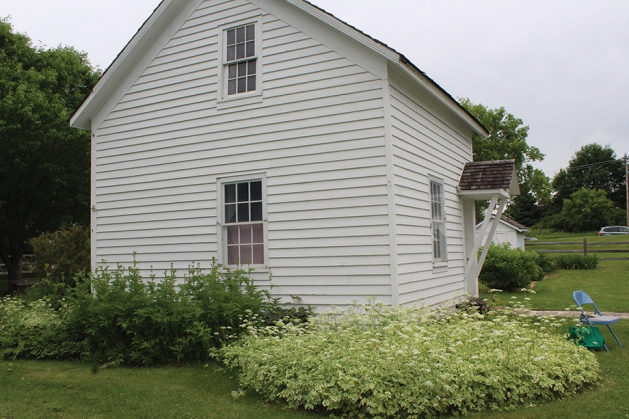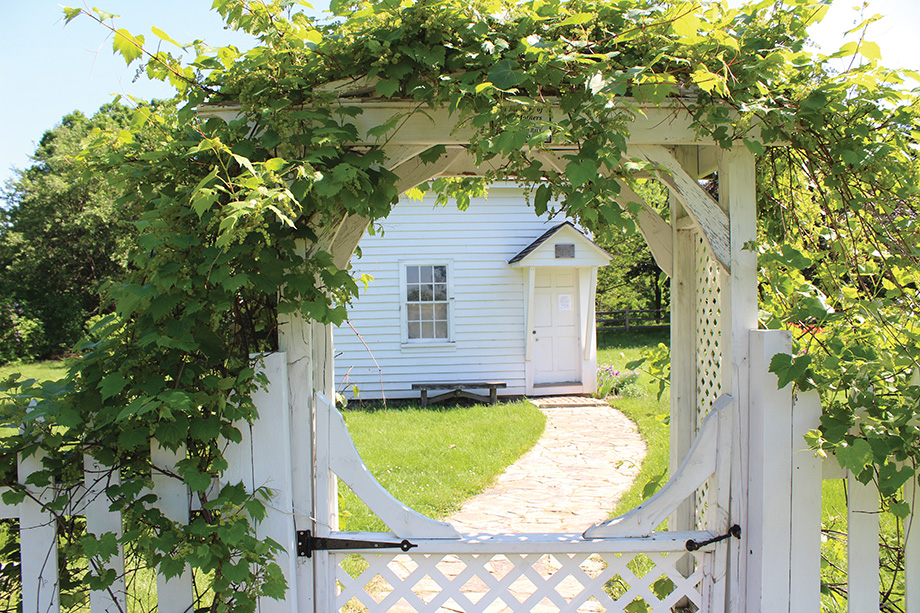
As the community rapidly grows and evolves, the Woodbury Heritage Society continuously provides and creates new ideas on how to get residents curious, interested and involved in the rich history of the city. Through education and preservation, it gives city goers an inside glimpse of what Woodbury once was. “The preservation of history is important because it helps us understand where we came from,” says Wayne Schilling, president of the Woodbury Heritage Society.
As a former farming mecca, Red Rock Township (now Woodbury and Newport) was originally inhabited by the Dakota tribe. After the first settlers arrived in the early 1840s, they adhered to traditional farming techniques to advance production and contribute to the growth of the community—wheat, dairy and livestock. When it was learned that there was already an existing Red Rock town, the region changed its name in 1859 in honor of former U.S. secretary of treasury Levi Woodbury. And the rest is history. “We can learn from this [history] about how to work together and keeping some of this older stuff is important because it gives us a tie to information that many families don’t have,” Schilling says.
In an effort to restore what remains, Schilling says it is important to acknowledge the influence that former structures and artifacts have had on our world today. “We have lost some really historic places in Woodbury for development that cannot be replaced,” he says. “We [the Heritage Society] like to think of it as if it wasn’t for us being the social conscious for history, that all of those things would be lost.”
The Heritage House
Built in the early 1870s the Heritage House was an attachment to the original log cabin home of German immigrant and property owner Fredrick Raths. Formerly used as a kitchen and living quarters, the structure was eventually moved on site to make room for a rebuild of the original home. Though the home has changed its interior purpose over the years across four generations of farmers, the home still remains in modern times as a relic of the olden days. Today, the house sits on the corner of Radio Drive and Lake Road in Marsh Creek as a symbol of early Woodbury settlement and architecture—just 1,000 feet over from where it was originally built.
Just outside the doors of the home sits a flourishing garden, aptly named the “Heritage Garden.” Like its tradition entails, the garden embodies the value of agriculture and the traditional approaches to land cultivation. The garden grounds host a variety of trees, a vegetable garden, butterfly garden and heirloom plants (crops that would have been grown by Woodbury settlers, such as tomatoes, pumpkins, corn, cucumbers, barley, potatoes and sunflowers) that are all maintained by volunteers.
The Heritage House and Garden is free and open to the public the second and fourth Sunday of the month from June through September between 1 and 4 p.m.

Woodbury Heritage Society Exhibit
Sixteen years in the making, the Washington County Heritage Center finally opened in fall 2021 as a facility exclusive to the history of the region. The center is home to three permanent exhibits, a rotational exhibit space, a classroom, a research center, gift shop and storage hub for antique artifacts. Created as a way to capture the spirit of the county, viewers can marvel at the fashion of the 1860s and 1960s, learn about the 19th century photographer and Stillwater native John Runk or try their hand at crosscut sawing in the lumberjack logging exhibit.
Through September 2022, the Woodbury Heritage Society is showcasing a variety of its artifacts from the city’s peak farming days such as a corn planter, milk jugs (five, eight and 10 gallons), butter churns, a wooden yoke, chests, tools, sewing wheels, toys and more. All of the items showcased are a combination of pieces donated from its archives and the Heritage House.
The exhibit also features a slab from the Woodbury’s Witness Tree, a burr oak formerly located on Radio Drive, that was estimated to have sprouted in 1738. Used as the city’s natural landmark, it was once used as a tool to help individuals navigate the vast farmland. Growing to be more than 200 years, it was eventually cut down due to infection.
As one who grew up in Woodbury, Schilling says it is amazing to see younger generations learn and appreciate elements from his past and beyond. “[The exhibit and its artifacts] represents how times have changed … and for the most part, for the better,” he says.
The center is open Tuesdays through Sundays from 10 a.m. to 4 p.m. Admission is $8 for adults and $3 for children.
Woodbury Heritage Society
8025 Lake Rd, 651.714.3564
Facebook: Woodbury Heritage Society
Washington County Heritage Center
1862 Greeley St. S., Stillwater; 651.439.2298









